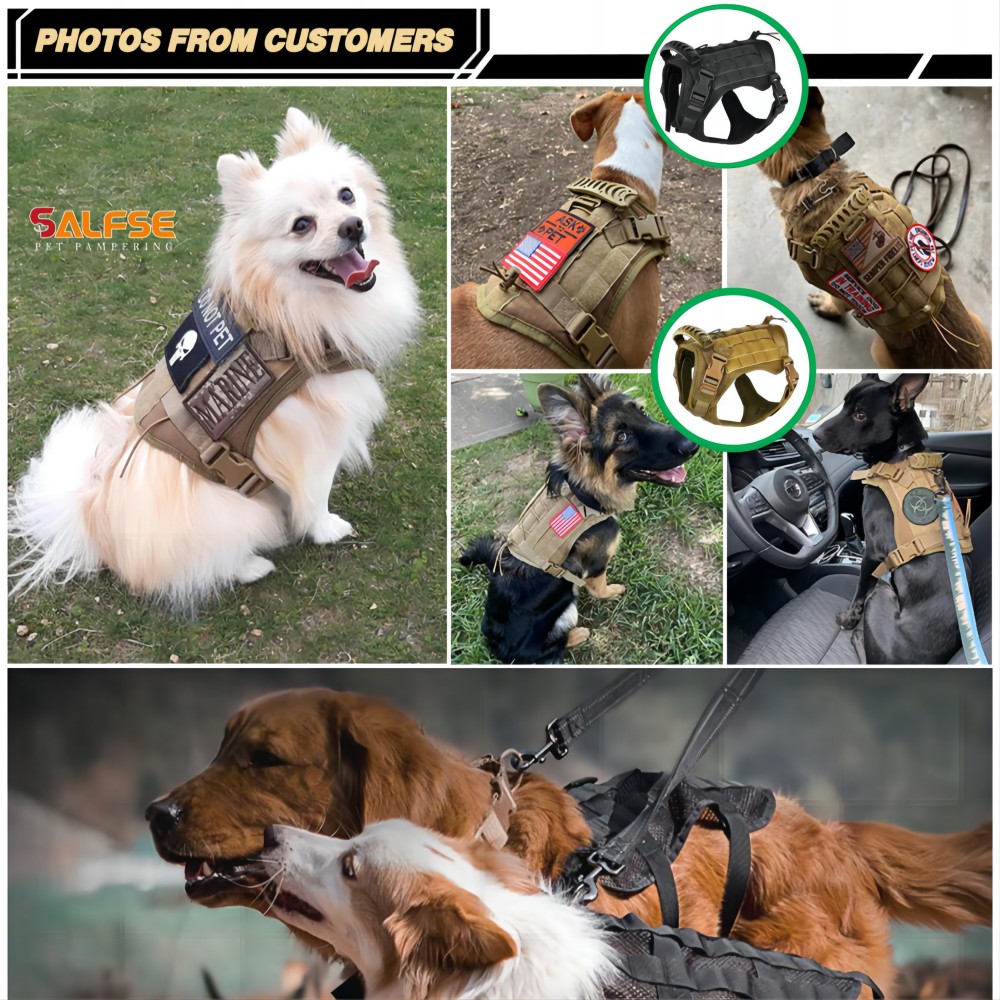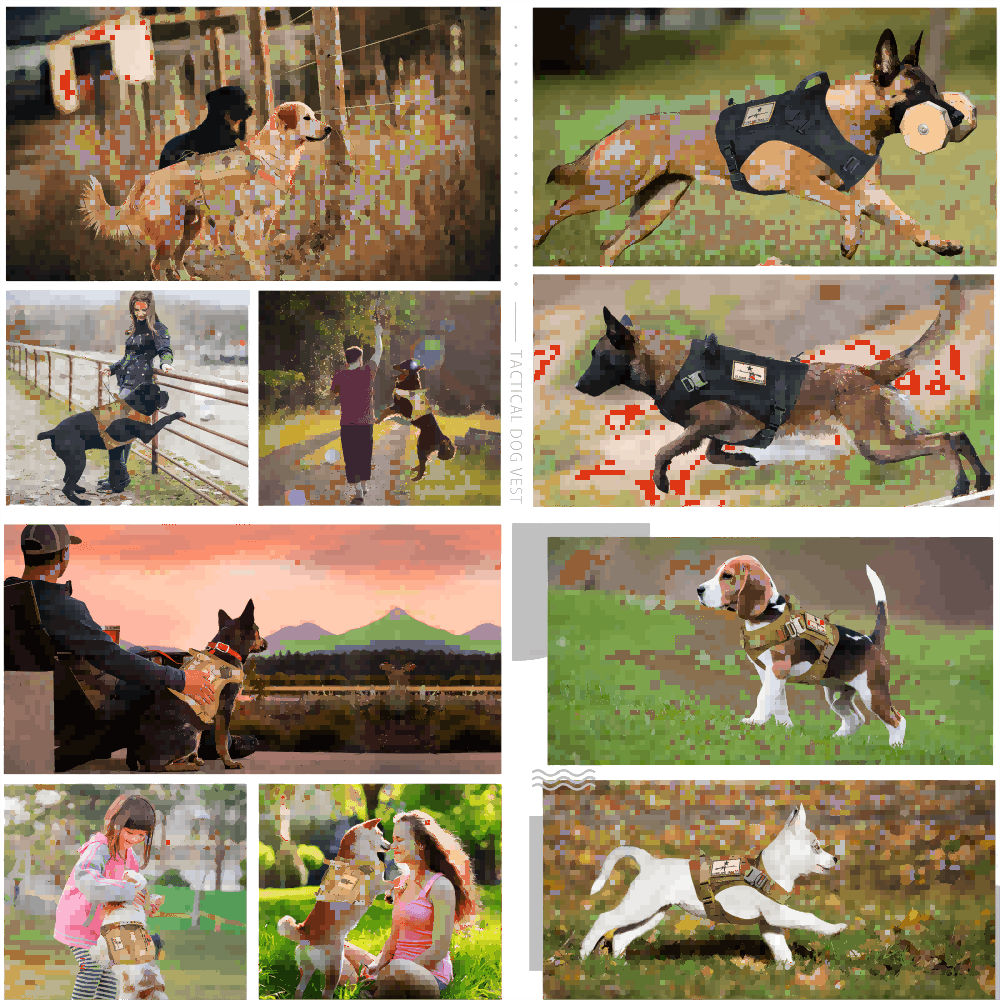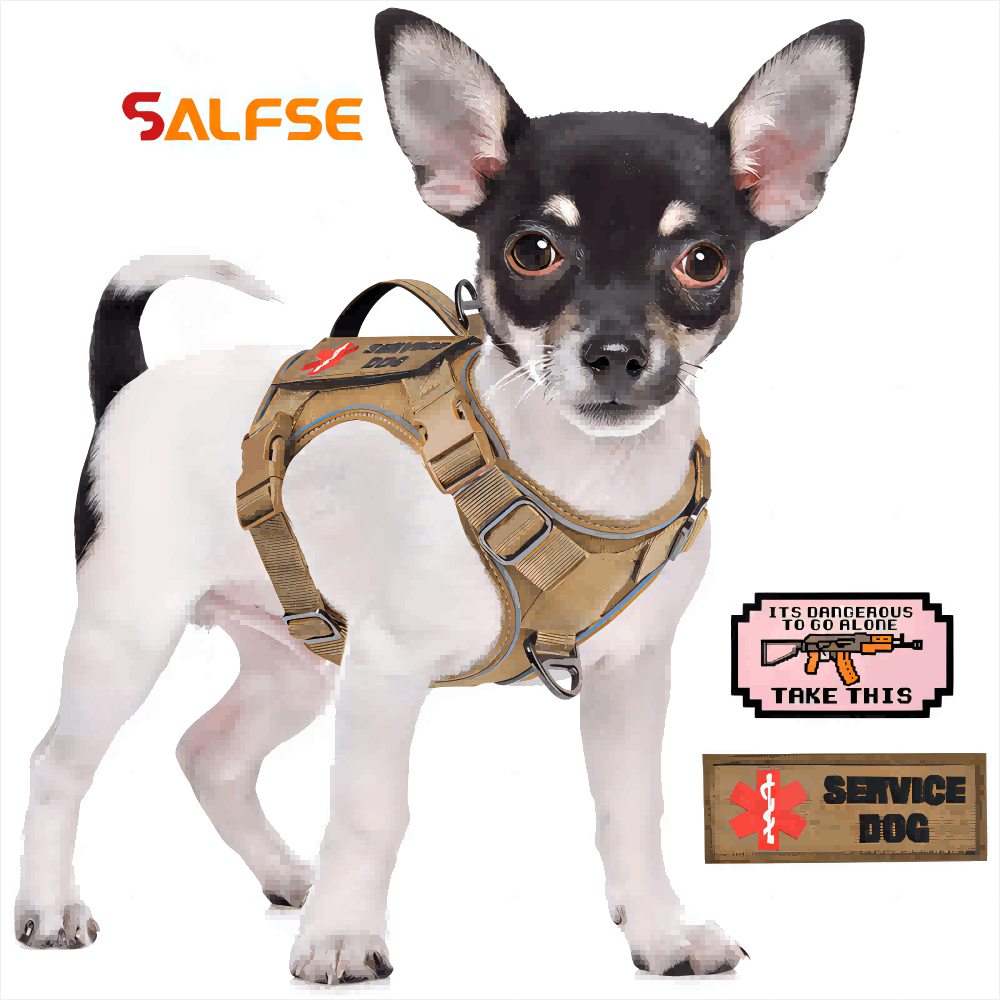1.Use the ignore method:
The first step in training your dog to wait patiently is to use the ignore method. The owner orders the dog to sit by and wait while the owner does his own thing. The dog may try to attract the attention of the owner in various ways, but the owner should ignore it, do not reprimand, comfort or coax, and only focus on their own affairs. Reinforce patient waiting behavior by rewarding the dog with a food reward or gratification of a previously desired goal as soon as the dog calms down.
2.Establish a patience reward mechanism:
Whenever the dog shows the behavior of waiting patiently, the owner should reward and praise in time to positively reinforce this behavior. The reward can be food, petting, or other things that the dog likes, so that the dog understands that it can only be rewarded by waiting patiently, so as to establish the habit of patience.
3.Gradually increase the training difficulty:
In the initial training, you can set the leaving time and distance to be short, and then gradually extend it, so that the dog can gradually adapt to the waiting time. During the training process, if the dog fails to be patient, the owner should immediately return to the original action, repeat the command “don’t move!”, and express dissatisfaction through facial expressions and gestures until the dog learns to wait patiently.
Below we will explain in detail the specific steps of this dog training method

Training your dog to be patient and to wait is an important part of developing good behavior. Through the training of patience and waiting, dogs can learn to control their impulses and emotions, especially when the owner is not at home, it can wait quietly without destroying things, and at the same time avoid bad behaviors caused by boredom .
1.There are many benefits to training a dog to be patient, especially when the dog is alone at home, it will learn to wait without destroying things. After it learns to wait patiently, it can slowly extend the waiting time, and finally it can wait indefinitely if the owner is not there or ignores it.
①The training method is that the owner does his own thing and orders the dog to sit and wait. It may do some things to attract the owner’s attention and achieve the purpose of making the owner pay attention to himself.
②At this time, the host should ignore it, be careful not to reprimand, do not comfort, coax, or glare, just focus on what you are doing and ignore it directly.
③ At this time, the dog will calm down, and once it is quiet, immediately give food rewards or satisfy the purpose it wanted to achieve before.
④But the dog may suddenly become excited because of the owner’s attention, and may not understand the owner’s meaning, and will continue to pester the owner. give it what it wants.
Just repeat it twice, and the dog will understand that only by waiting can he get what he wants.

2.Train your dog to learn to wait
Many times, we need dogs to “wait for a while”, and this training is often used in other training.
①Before training, we need to let the dog focus, first tell it “don’t move!” with a password, and use actions or gestures to assist in strengthening this command, and then leave the dog.
②In the beginning, the distance is not too far, and then see if the dog can keep still. If it can do it, go back and reward it, stroke it and praise it, so that the dog can see that you are satisfied with its expression.
③If the dog moves after you leave not far away, then go back and repeat the initial movement immediately, repeating “don’t move!” with the command, and express dissatisfaction with it in expressions and gestures. After repeated training several times, the dog will understand the meaning of the command “don’t move!”
④After the initial success of the training, the owner can gradually extend the time and distance of leaving, so that the dog can get used to waiting for you to come back after finishing the work.
Be patient during the training process, and don’t be impatient or use corporal punishment and other inappropriate ways to treat the dog, so as not to have negative effects.
(Take your dog out and let him wear a tactical dog harness, he’ll look really cool)

Core Points and Principles
Training your dog to be patient and wait is an important step in developing good behavior habits. It helps to improve the dog’s self-control and ability to calmly deal with various situations. The following principles should be followed in training:
1.Correct use of rewards: Give rewards and praise in time during training to positively strengthen the dog’s patient waiting behavior. The reward should be timely and clear, so that the dog understands that waiting patiently is a worthwhile behavior, so that he is willing to continue to perform well.
2.Gradually increase the difficulty: When training, start from the simple and gradually increase the difficulty. In the early stage, the leaving time and distance can be shortened, and then gradually extended after the dog adapts, so that the dog can gradually get used to the waiting process.
3.Do not use punishment: Do not use punishment during training, such as corporal punishment or loud scolding, which will make the dog feel scared and produce negative emotions, which is counterproductive. Training should be based on positive rewards and encouragement, so that dogs can have positive associations with training.

4.Be patient: Be patient during the training process. Each dog has a different learning progress, and some may need more time to master the waiting skills. The owner should be patient, don’t be impatient, and guide the dog in a gentle way.
5.Insist on consistency: Maintain consistency in the training process, and all family members must follow the same training methods and commands to teach the dog. This can prevent the dog from confusing different commands and enhance the learning effect.
6.Consider the dog’s needs: During training, fully consider the dog’s needs and personality characteristics. Some dogs may be more anxious or easily distracted. The owner can adjust the training method according to different situations to make the training more suitable for the dog’s needs.

Summarize:
Training your dog’s patience and waiting is a beneficial and necessary process. It not only helps to cultivate the dog’s self-control and calm coping ability, but also improves the dog’s behavior habits, making it more sensible and peaceful in daily life. obedient. With the right training methods and persistence, dogs can learn to be patient when their owners are not around, and to be able to control their impulses and emotions.
During the training process, the owner should pay attention to the use of rewards and praise, so that the dog understands that waiting patiently is a positive behavior and deserves rewards. At the same time, the owner should gradually increase the difficulty of training, so that the dog can gradually adapt to the longer waiting time. Be patient during training, don’t use punishment, and be consistent so your dog doesn’t get confused by different commands.
The most important thing is that the owner should consider the dog’s needs and personality characteristics, and adjust the training method according to different situations, so as to make the training more effective and suitable for the dog. Through reasonable training and persistent efforts, dogs can learn to wait patiently and become more sensible and obedient companions.

Related questions and answers about training your dog to be patient and wait
Q1: Why is it important to train your dog to be patient and wait?
A: It is very important to train your dog’s patience and waiting, because it can cultivate the dog’s self-control and calm coping ability, and help the dog to be more sensible and obedient in daily life. At the same time, patience and waiting training can also help solve problems such as dog anxiety, distraction and destruction, and improve the quality of dog behavior.
Q2: How long does it take to train a dog to be patient and wait?
A: The patience and waiting required for training a dog varies from individual dog to dog. Some dogs may adapt faster, while others may take longer. Usually one or two training sessions per day, 10-15 minutes per session, can last from several weeks to several months, depending on the dog’s learning progress and training goals.
Q3: How to judge whether the dog’s patience and waiting training is successful?
A: You can judge whether the training is successful by observing the behavior of the dog. Once the dog can keep quiet and still under the command, wait for the owner’s response or command, and show strong patience, the training can be considered successful.
Q4: Are tools needed to train patience and waiting?
A: Usually, training your dog to be patient and wait doesn’t require the use of special tools. Relying mainly on the owner’s voice and gesture commands, as well as timely rewards and praise, dogs can be effectively trained.
Q5: Will there be side effects on dogs when training patience and waiting?
A: The correct training method will not cause side effects to the dog, but is beneficial to its physical and mental health. But if too much punishment, coercion, or excessive pressure is used in training, it can lead to negative emotions and behavior problems in dogs. Therefore, the owner should choose a gentle training method, be patient, and avoid excessive pressure to create a positive learning environment.
Previous section: How to train a dog’s concentration? -Dog training(16)
Next section: How to train a dog to stay in the pet cage obediently? -Dog training(18)









-1.png)







































